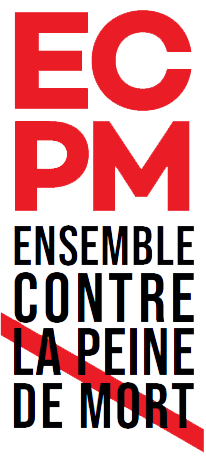Like for the tag-based approaches, suggestion strategies based on UGC not only leverage this facet info to improve recommendation high quality, but in addition as a means to explain the suggestions to customers. An in-depth evaluation of such approaches can be present in Chen et al. (2015). However, together with the supply of recent knowledge sources—including each structured and unstructured ones, corresponding to user-generated content—comes a gentle stream of latest proposals for hybrid techniques that leverage such info to make higher predictions.
Today everything we’d like or need to buy can easily be accessible to us via this new digital market. From content in leisure to groceries and clothes, each basic necessity or luxury is on the market on the tip of our hands. With a plethora of choices available, there always has been a critical have to filter, prioritize and efficiently deliver related information to be able to overcome the potential problem of data overload, creating confusion to many Internet customers.

Below I will share my findings and hope it might possibly save your time on researching if you’re as quickly as confused by the definition. Below is an example of Item Based Content Filtering the place a movie suggestion system recommends motion pictures based mostly on user scores and kinds suggestions according to it. Let’s calculate the cosine similarity of the product_classification_features for all of the products.
History, Trends, And Future Of Content-based Recommenders
The content material or attributes of the stuff you like are known as « content material. » Based on my understanding, approach 1 is similar to item-based collaborative filtering. In quick, the system will advocate anything much like an merchandise you like before. The only concern with this method is that the prediction of the mannequin for a given consumer, item pair is the dot product of the corresponding embeddings. So, if an item isn’t seen during training, the system can’t typically create an embedding for it and therefore cannot question the model with this merchandise. The Internet is the new digital market, the place it presents us with a selection of decisions, typically too overwhelming to select from.
However, the first and second customers’ preferences aren’t well explained by this single function. Based on the person data, we first look at the author name and it is not Agatha Christie.
Understand The Information For Suggestion System
You want the user and merchandise profiles to be represented in a single mannequin to do so. A similarity perform computes the user-item similarities, which are used to provide recommendations. User-generated content (UGC) With the emergence of the participatory net (Web 2.0), varied kinds of UGC became obtainable, such as product evaluations, consumer tags and discussion board discussions.
Similar users are grouped and all their interactions are considered when making recommendations to the target person. Collaborative filtering-based recommender systems solely depend on past interactions between customers and objects in order to recommend new products. The first step in offering content-based recommendations is modelling items what is content-based mode. The options could be, for instance, the genres of a movie, elements in a selected meal, or keywords from a text file. Finally, the paper Feature-combination hybrid recommender techniques for automated music playlist continuation (Vall et al. 2019) contributes to the area of music suggestion.
fashions can suggest an item to user A primarily based on the interests of an analogous user B. Furthermore, the embeddings may be learned automatically, without counting on hand-engineering of options. Heterogeneous data networks Finally, numerous current works goal https://www.globalcloudteam.com/ to attach numerous forms of facet info in parallel. In such approaches, the available knowledge is represented as a Heterogeneous Information Network (HIN), where the semantic relationships between objects are represented via various kinds of relations between the community nodes.
- Historically, the word content material has modified its which means in second language instructing.
- The user-item similarity is computed from person and item vectors in this method.
- We calculate the rows’ (word vectors for each movie) distance and advocate that motion pictures, which have much less distance.
- For example, when a user searches for a gaggle of keywords, then Google shows all the gadgets consisting of these keywords.
We assign a selected value to every user-item pair, this value is named the diploma of preference and a matrix of the consumer is drawn with the respective gadgets to establish their choice relationship. Let us also use the product column to create one other cosine similarity. We will take the common of each the cosine similarity and see if the results are better. For example, if a set of customers likes motion movies by Jackie Chan, this algorithm might suggest the flicks having the below characteristics. Many products can be found in such e-commerce shops ranging from a toothbrush to a Car.
Predictive Modeling W/ Python
Toy Story is an animated movie created by Pixar studios – so the system can advocate different animated movies by Pixar studios like Toy Story 2. For our, e.g., we are going to use the product metadata like category, sub_category, kind, worth, etc. We will extract similar products from the product portfolio based mostly on these features. The function we created earlier (product_classification_features) will be useful right here. The collaborative nature of this method is obvious when the model learns the embeddings.
Any outcomes that don’t have any information could be dropped, a new DataFrame of flicks and their correlation score (similarity) to one Movie, specifically, can be constructed. A Utility Matrix can help signify the user’s preference for sure gadgets. With the information gathered from the person, we will find a relation between the objects that are appreciated by the consumer as well as these that are disliked, for this function the utility matrix can be put to finest use.

We’ve already beneficial movies that are just like our goal movie. In this story, we are going to attempt to cover what Content-Based Filtering is and we will be coding a easy film recommender by utilizing this dataset. Collaborative filtering recommender techniques have performed a big function within the rise…
Understanding Knowledge Kinds Of Columns
In it, we are in a position to create a choice tree and discover out if the consumer desires to learn a guide or not. Usually the similarity shall be derived from the description of the item and the idea of TF-IDF will be launched. Thus the way you model your information in a graph impacts the quantity of area used, in addition to the velocity of the mannequin.

We count on this transfer of methods and strategies to continue in the future. For occasion, contextual embeddings have recently been proven to outperform the state-of-the-art on certain NLP duties (Seo et al. 2017a), and they may show promise for content-based suggestion algorithms as nicely. For occasion, producing recommendations for related or related gadgets (Yao and Harper 2018), or recommending composites or sequences of things. Soon, nonetheless, it turned out that pure content-based filtering approaches can have a quantity of limitations in many utility situations, particularly when in comparison with collaborative filtering systems.
Algorithms are ‘trained’ in machine studying to detect patterns and features in large volumes of knowledge in order that they’ll make judgments and predictions based mostly on new data. As the more data is processed, the smarter the algorithm becomes, the more accurate the choices and forecasts turn into. Content-based filtering is likely considered one of the frequent methods in building recommendation methods. While I tried to carry out somewhat research in understanding the element, it’s fascinating to see that there are 2 approaches that declare to be “Content-based”.
The Method To Convert Any Text Right Into A Graph Of Ideas
Automated suggestions have turn out to be a pervasive characteristic of our online consumer experience, and because of their practical significance, recommender methods also symbolize an lively area of scientific research. Historically, the 2 main approaches of constructing recommender methods are collaborative filtering (CF) and content-based filtering (CBF). In its pure type, collaborative filtering depends on the identification of preference patterns in a consumer neighborhood. Content-based filtering approaches, in contrast, only contemplate the past preferences of an individual user and try to be taught a desire mannequin primarily based on a feature-based representation of the content material of recommendable objects. The created mannequin approaches assuming there is an underlying “generative” insight that explains the user-item interactions and tries to find it in order to make new predictions.
Recommender techniques (RS) gather details about users and objects and supply merchandise recommendations, bringing nice worth to on-line stores – outfitters, bookstores, you name it. Companies like Netflix base their whole companies on excessive performing recommender techniques. Content-based filtering in recommender methods leverages machine studying algorithms to foretell and recommend new however comparable items to the user. Recommending products primarily based on their traits is simply potential if there’s a clear set of options for the product and a listing of the user’s decisions. The primary thought of content-based methods is to attempt to build a mannequin, primarily based on the out there “features”, that designate the noticed user-item interactions. Still contemplating users and flicks, we can also create the model in such a method that it might provide us with an perception into why so is occurring.
